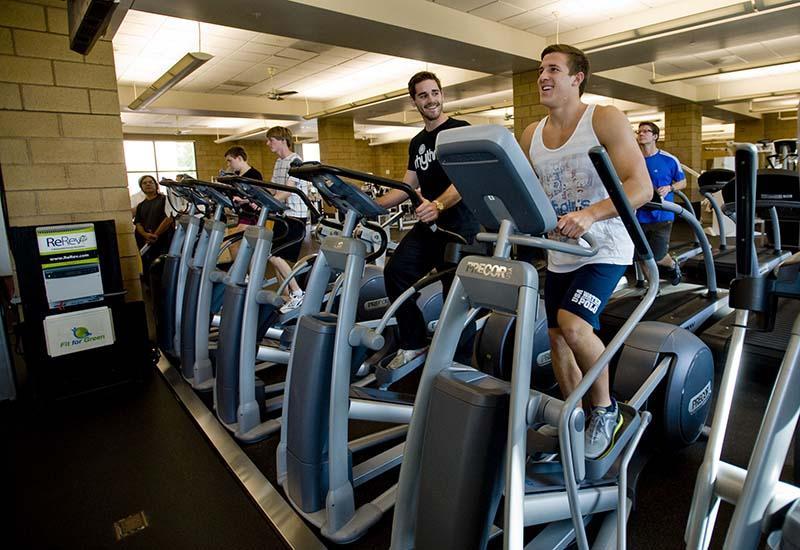by Emily Wemhoff
Resistance band, not free weights
Resistance bands require coordination and balance so you end up utilizing more muscle groups to stabilize your body. With resistance bands, it is easier to target specific muscle groups or smaller muscles than with free weights. You can also mimic real-life sports scenarios by using a band to mirror kicking or jumping movements. A 2008 study showed that exercising with resistance bands can illicit similar changes in strength and body composition similar to those from standard weight machines for a significantly lower price. Resistance bands can be used to build muscle, but also to prevent injuries. They are used frequently in physical therapy for injury rehabilitation and sports training to improve power and speed.
Kettlebell, not treadmill
A kettlebell, which resembles a cannonball with a handle that can range from eight to 100 pounds, is one of the most functional pieces of fitness equipment available. Kettlebell exercises engage your entire core, building strength and endurance. Swinging and lifting the heavy metal bells not only helps strengthen your arms, but is an excellent cardio workout. Using a kettlebell also simplifies your workout. Instead of using several machines or weights to work all your muscle groups, you do it with one kettlebell. Prices vary based on the weight of the kettlebell you buy, but most range from $20 to $100.
BOSU ball, not stability ball
The BOSU ball, which looks like a stability ball cut in half, is beneficial for training balance, enhancing flexibility and delivering cardio workouts. BOSU is an acronym for “both sides up,” a reference to how the ball can be positioned. You can use the BOSU ball dome-side-up for cardio, lower body strength or core moves. Or you can turn it over and use the platform side for upper body exercises, like push-ups. Although a BOSU ball is more expensive than a stability ball, it offers endless exercise possibilities, while the stability ball is less functional.







